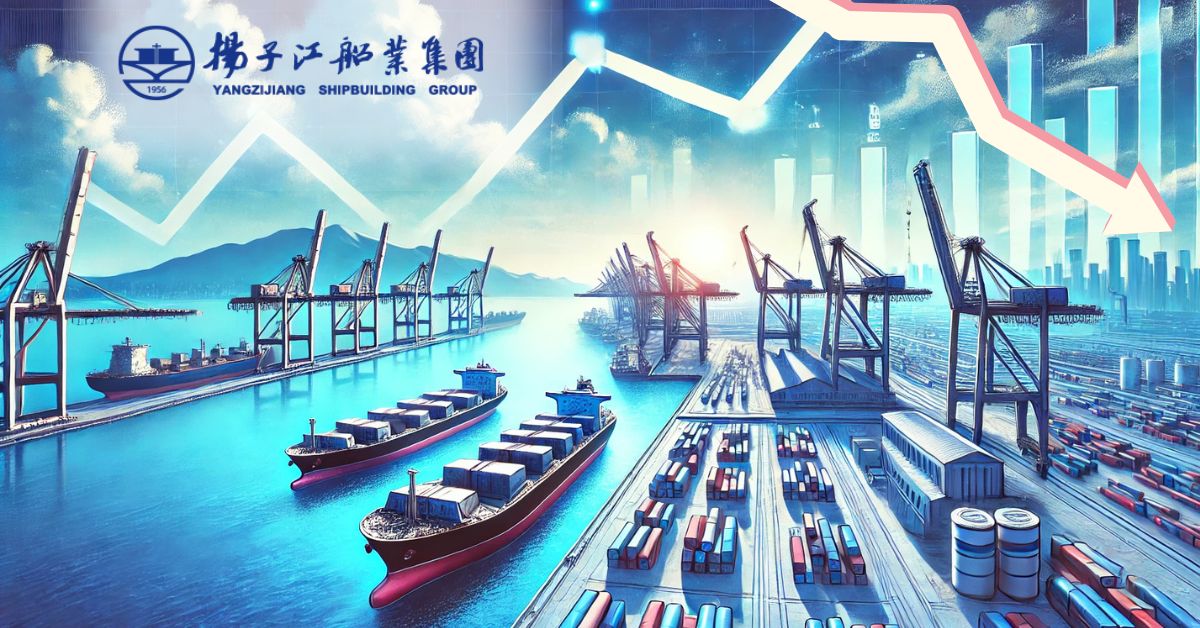Just when things seemed smooth-sailing, a storm hit this SGX-listed shipbuilding business.
Yangzijiang Shipbuilding (Holdings) Ltd (SGX: BS6) has seen its share prices plummet almost 30% over the past week. And there could be more selling pressure in the upcoming days.
But if we were to rewind the clock and look at the share prices over the past year, YZJ’s performances was a far cry from the selloff. YZJ’s share prices was almost a one-bagger over the past 1 year.

Whether if you are observing as a bystander or for those interested to take a punt, here’s what you need to know.
Fundamentals

YZJ’s 10-years results speak for itself. Apart from the two years affected by COVID, the company swiftly recovered, achieving better sales than pre-pandemic levels. Despite lower sales during the COVID era, the company still booked healthy net profit. Sales for new ships might have been affected, but YZJ’s exposure to the shipping segment was a boon, benefiting from the industry’s strong demand.
The amount of cash generated and free cash flow was what floated YZJ’s share prices. The company roped in close to RMB 13 billion in operating cash flow, while achieving a FCF margin of 44%.

YZJ’s share price was backed by strong fundamentals. And with e-commerce becoming the de-facto way for people to shop post-COVID, it drove the shipbuilding business and increased the runway of growth for the company.
The Tariff-berg
Brace yourself – we have another 4 years of tariff-laden timeframe led out.
Just like how Titanic was billed as the unsinkable ship, nothing seemed to be able to fundamentally thwart YZJ. Not until news broke that US trade representative (USTR) proposed port entrance fees of up to US$1 million per vessel owned by Chinese maritime transport operators, or alternatively, a charge of US$1,000 per net tonne of a vessel’s cargo capacity.
Although not necessarily counted or considered as an import tariff, the fee sought to target not just China exports, but all goods transported on Chinese-built ships. This means that a Chinese-made ship transporting something from Mexico to the US would still be slap with the ludicrous fee.
The alleged reason? A probe’s findings that China’s global shipbuilding tonnage share rose significantly from 5% in 1999 to 50% in 2023, due to hefty state subsidies and preferential treatment for state-owned businesses, which have hurt international competitors.
In an attempt to bring balance to that, USTR suggested the above measure, forcing China ship operators to pay more to transport goods that the daily Americans use, to dissuade US importers from relying on Chinese carriers.
Trade War 2.0
This is not the first time we’ve encountered this. At the peak of COVID, the shipping industry was a nightmare to everyone except the shipping companies.
Trump’s tariffs were in effect and was exacerbated by supply chain disruptions – the imbalance of shipping containers and the shipping route disparities. The US were still importing, but slowed down export during the lockdowns. Shipping containers piled up at US ports, while Chinese ports and other parts of the world were scrambling for empty containers.
Not to mention the cut-throat sea freight prices that followed.
Shipping and global supply chain is deeply intertwined. If tariffs were so effective, we should have seen China weakened from Trump term 1 to now.
China has been anything but weaker. Heck, you can’t even say the stock markets are weak now.
The fees will be transferred to the everyday consumers like you and me. In this instances, the US citizens will be paying for the imports they consume. And that translates to stoking the already hard-to-tame inflation.
And even if everyone opts for carriers made ex-China, with 50% of the ships operating the seas being Chinese-made, this sudden switch would create a demand spike for non-Chinese alternatives, ultimately pushing sea freight costs up.
My Verdict
The current US government, has a knack for calling bluffs, often using news headlines to bring the other party to the negotiation table. Although previously paused, the latest news is that Mexico and Canada’s tariffs will go in effect starting 4th of March, with an additional 10% tariffs on China.
While these tariff threats might make Mexico and Canada bow to the US for mercy, I personally think Trump is asking for the ‘Uno reverse card’ from Xi, prompting China for more tariffs on US imports as well.
No one wins (except maybe India) when these 2 powerhouses lock horns in another tariff-laden battle. Safe aside for potential U-turns from Trump, inflation will be high and stubborn, while international news will be a comedy.
What about YZJ? Well, to take a leaf from the likes of BYD Ord Shs H (HKG: 1211), even when shunned by the US, it manages to find its value and demand from the rest of the world. To reiterate, no one wins an economic of scale war going against a Chinese company. The industry might be too cyclical for my liking, but at a P/E of less than 9.0, with the market sell-off a scare (albeit a big one), I don’t see a fundamental switch in YZJ.
If any, it is a short term scare. We would still be relying on ships for exports and imports intercontinentally. So, that status quo remains, and the best shipbuilders should still be around the next 20, 30 or even 50 years, so long as there’s no major mismanagement and malpractices.
Given the fact that YZJ share prices have surged and tripped over recently, it made it even better for the tabloids to harp and the analysts to comment. There might be short-term implications if the market really does switches away from Chinese-made ships, but given the dynamics mentioned, the everyday consumer will always be at the losing end.
Discover Alvin’s strategies for selecting stocks to build a winning investment portfolio at his upcoming webinar session. Don’t miss out – register now!

